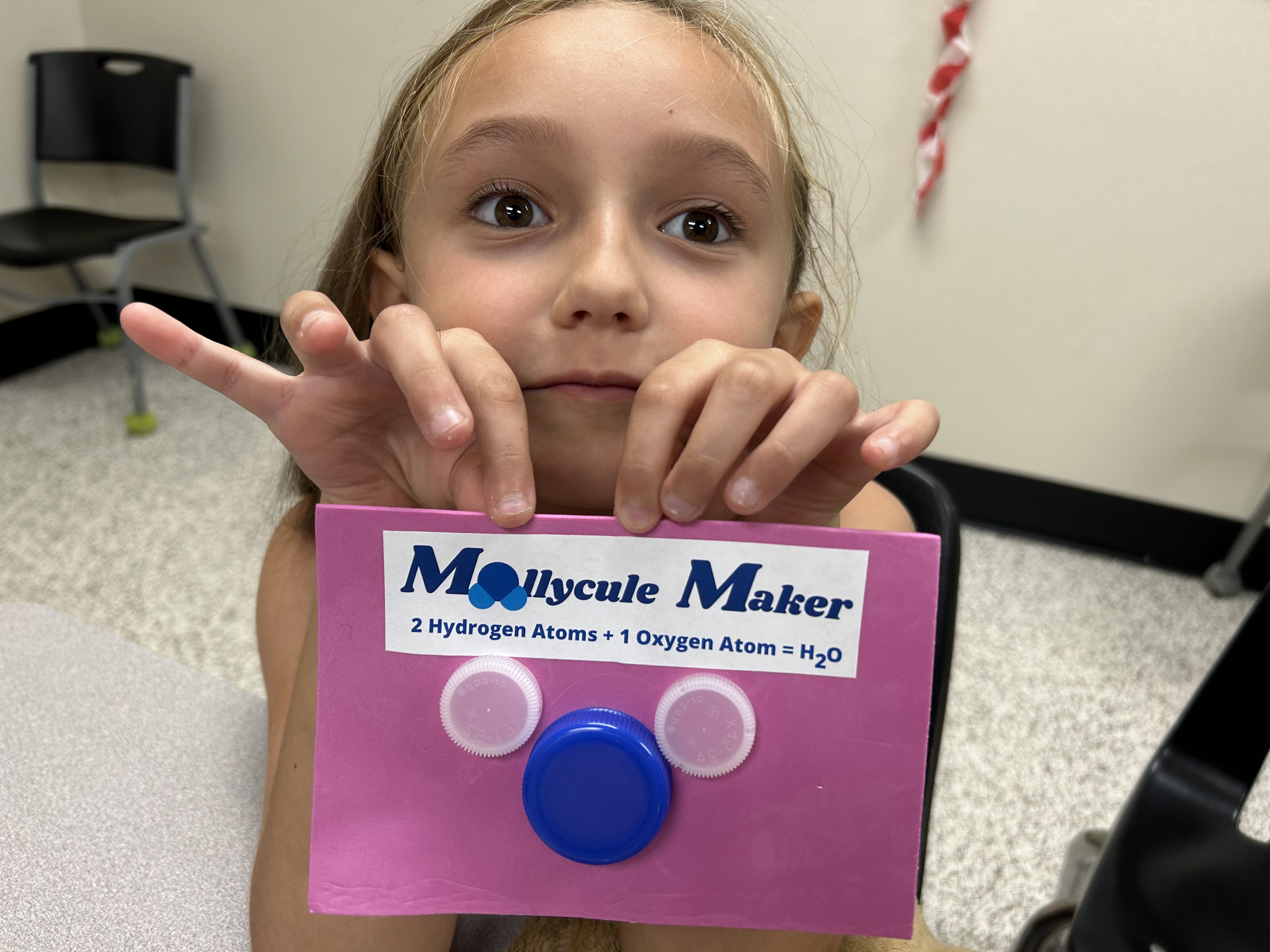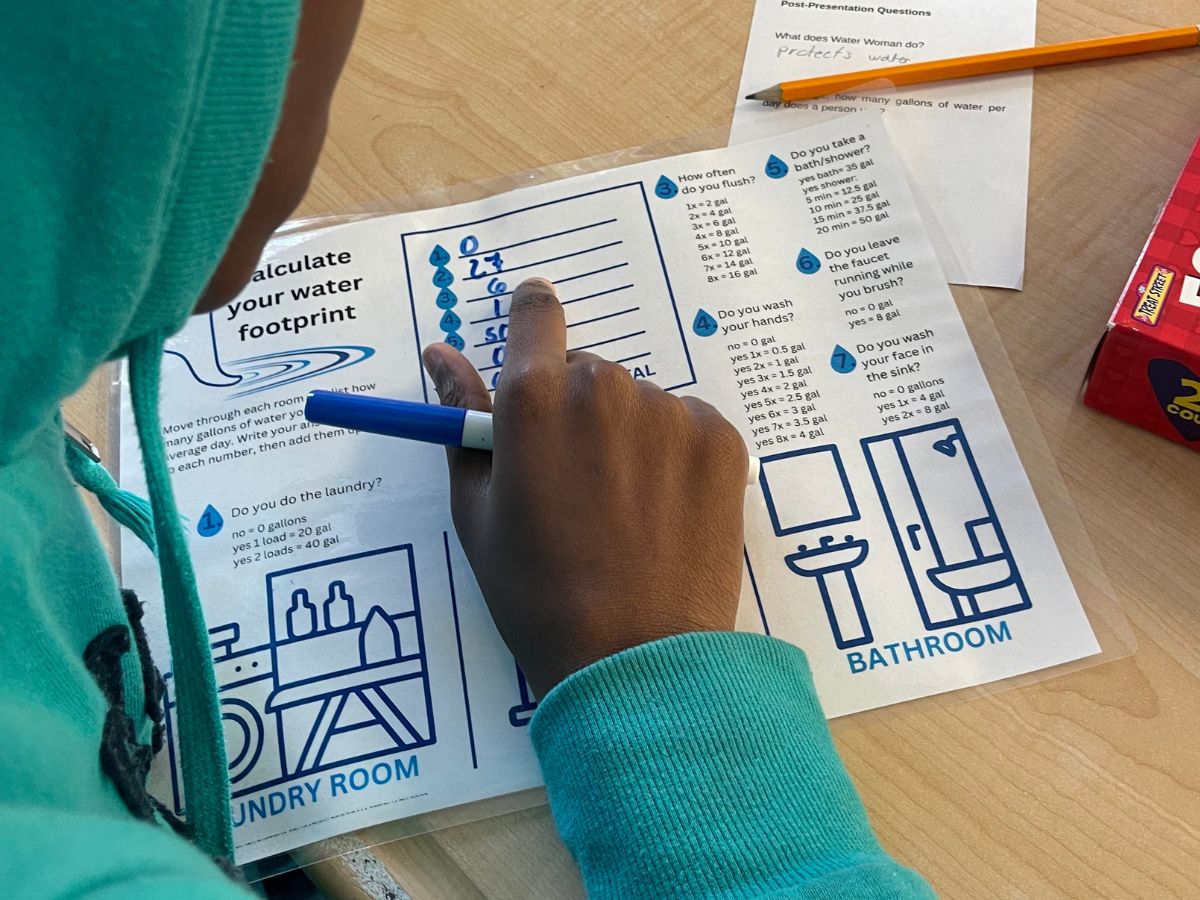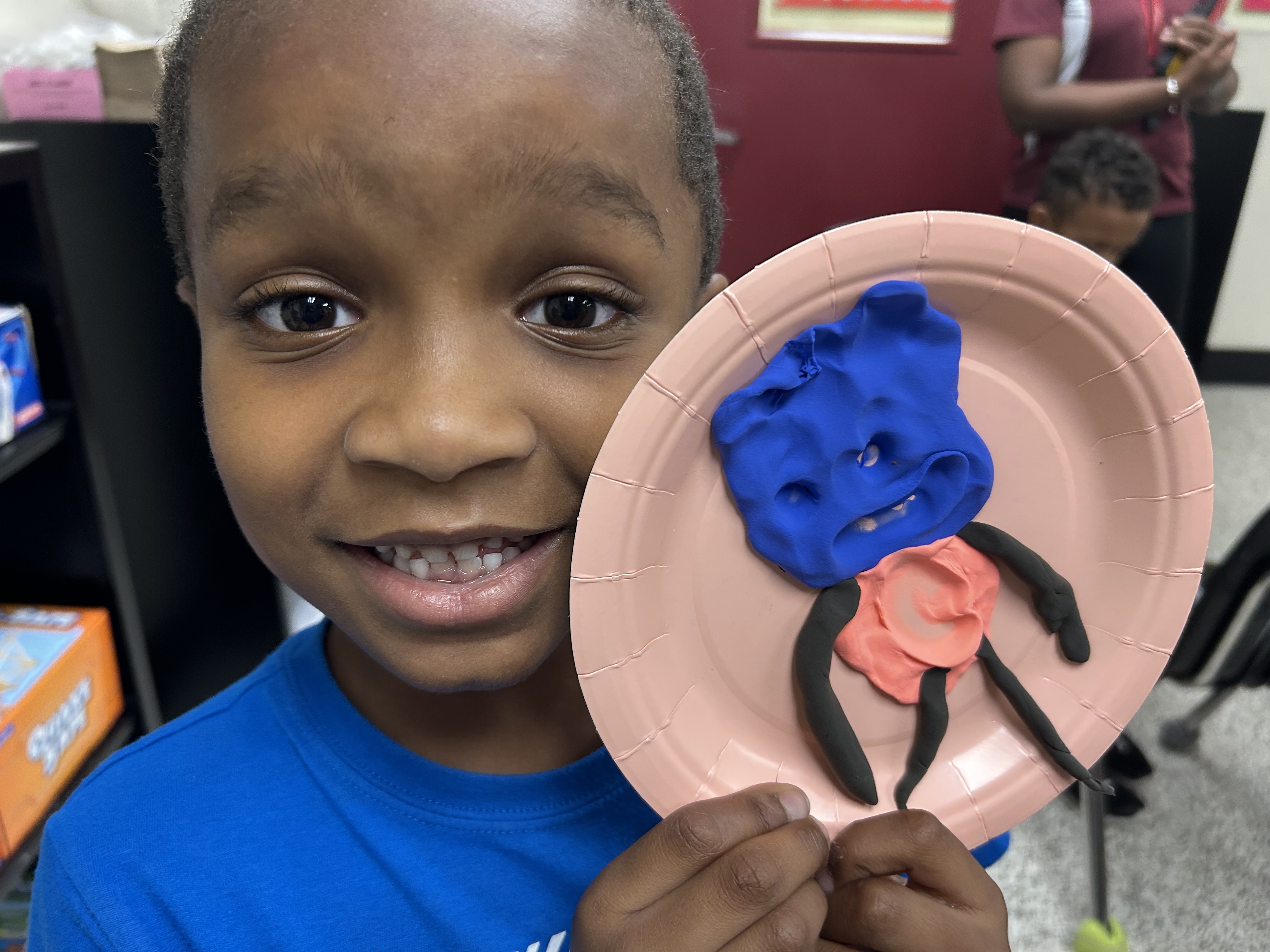Education
Education and outreach are opportunities for us to bring awareness to the many ways we all can help keep our environment thriving. Children can lead the way when they understand how their actions can impact and influence those around them.
Through presentations, educational videos and materials, and our participation in community events, we demonstrate how the water and wastewater treatment processes work, and the importance of protecting and maintaining our systems.
The materials, activities, and content of this education program are aligned with several of the Next Generation Sunshine State Standards (NGSSS) Science Benchmarks in collaboration with St. Lucie Public Schools.
For more information about classroom presentations, field trip opportunities, and Utility Systems-related resources, contact:
Jenny Tomes, APR
Assistant Manager - USD Community Outreach
(772) 618-3142
jtomes@cityofpsl.com
To schedule a presentation, please click here.
Little Lessons Video Library
SC.4.P.8.2, SC.3.P.9.1, SC.1.E.6.1, SC.1.E.6.2, SC.2.P.8.2, SC.5.E.7.2
The library is open! The online video library that is, and it is filled with “Little Lessons” all about water and wastewater. This video series breaks down a variety of topics into short videos.
The online library provides a total of one and half hours of content that aligns with several of the Next Generation Sunshine State Standards (NGSSS) Science Benchmarks for elementary-aged children.
There are 14 Little Lessons and each one focuses on a water or sewer-related topic, which include the following:
- Why is Water So Special?
- How Can I Become a Water Saver Superhero?
- How Do Microorganisms Help Treat Wastewater?
This unique online video library is available to teachers, students and homeschool groups alike, as well as anyone wanting to know more about Port St. Lucie’s water and wastewater operations.
The complete Little Lessons online library is available here.
Water Woman inspires conservation
Water Woman is a water-saving superhero, known for her conservation efforts and passion for this precious resource. All living things need water to survive and Water Woman helps protect and preserve water quality while inspiring others to do the same.
You can find Water Woman representing Port St. Lucie Utility Systems at community events and in the classroom. Her new activity book includes word games, trivia, and lots of coloring pages that teach kids about the importance of saving water and the simple ways they can help.
Click here to schedule a classroom presentation with Water Woman or contact Community Outreach Assistant Manager Jenny Tomes at jtomes@cityofpsl.com to find out where Water Woman will turn up next.
Click here to download Water Woman Activity Book.
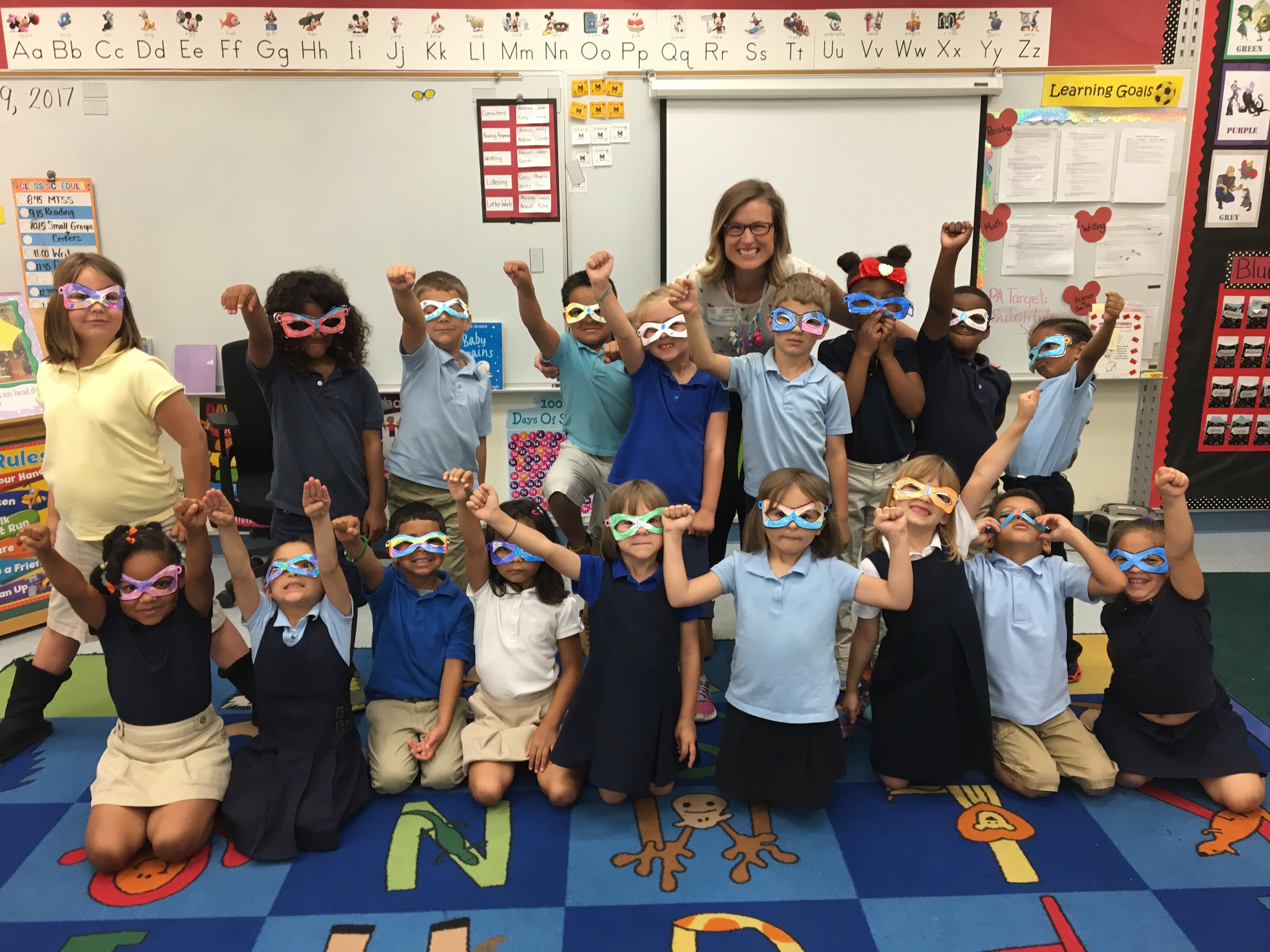
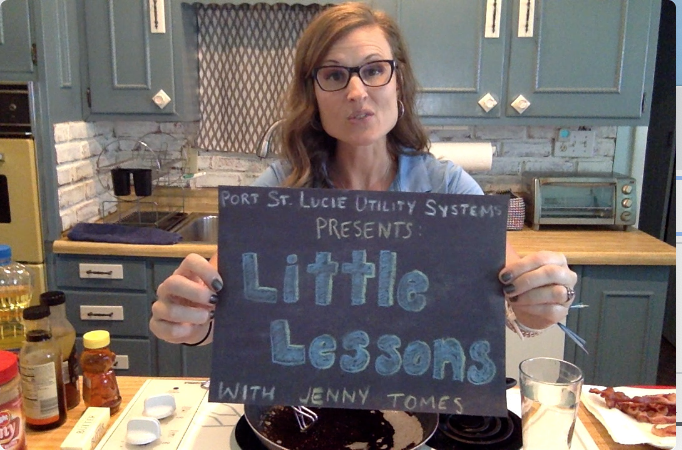
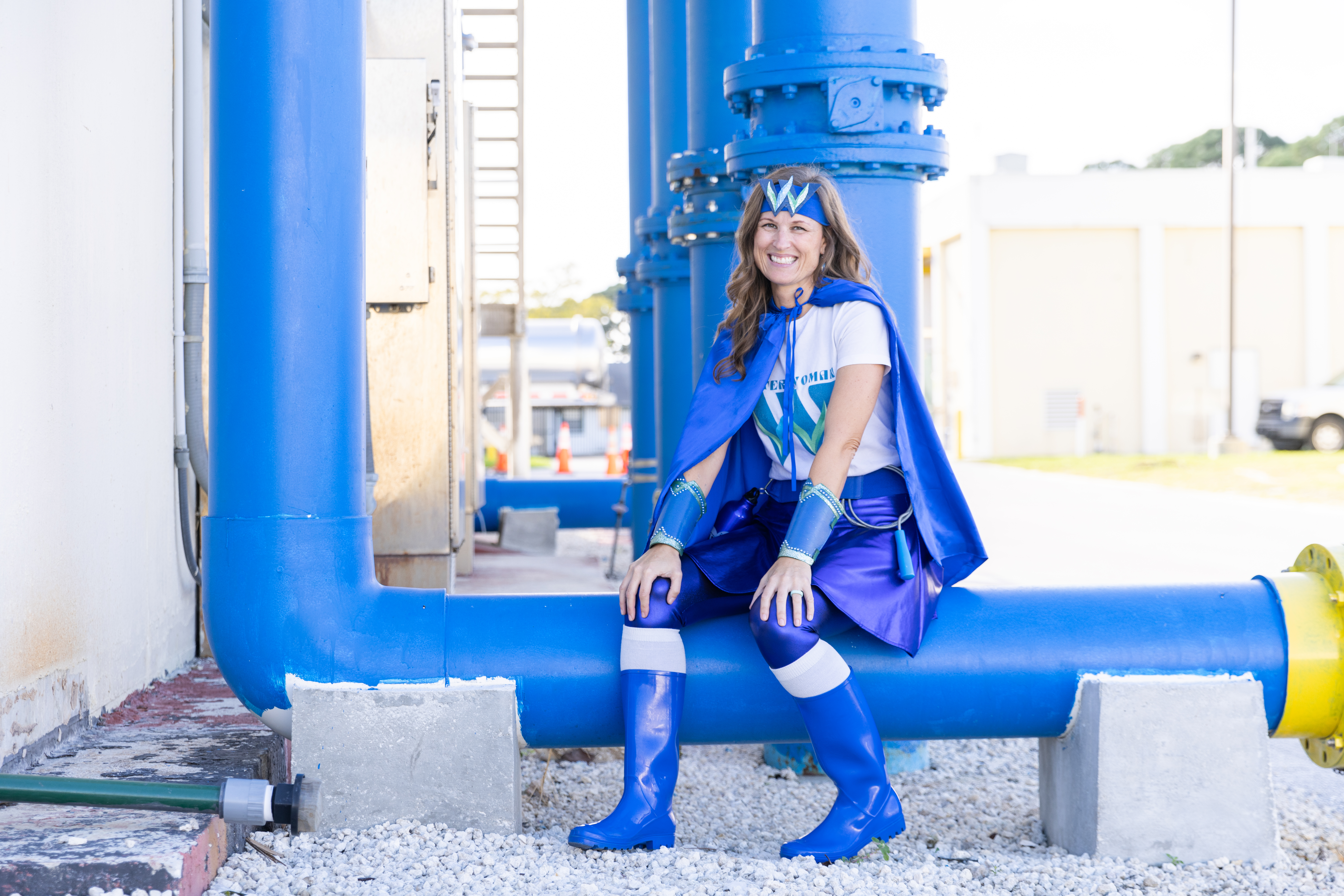
Water Hugs
Utility Systems published a children’s story about one little girl’s love of the water called Water Hugs. Written by Utility Marketing Coordinator Jenny Tomes, she read the story during her summer camp education presentations. Jenny asked the kids to draw a picture to go with each page of the story. Drawings included in the book were chosen from the 21st Century Community Learning Centers and Port St. Lucie Parks & Recreation summer camp programs. The artists, all Port St. Lucie residents, are 7 and 8 years old. Each received their very own copy of the book, and more are being distributed at the Utility Systems Customer Service Office located in City Hall.
Water Hugs is dedicated to all of the amazing boys and girls who take such good care of our water and we hope they enjoy this book!
Download printable version in English
Listen to and watch author read Water Hugs
Download printable version in Spanish
Watch Protecting Paradise: Youngsters get an education in clean water on WPTV News Channel 5
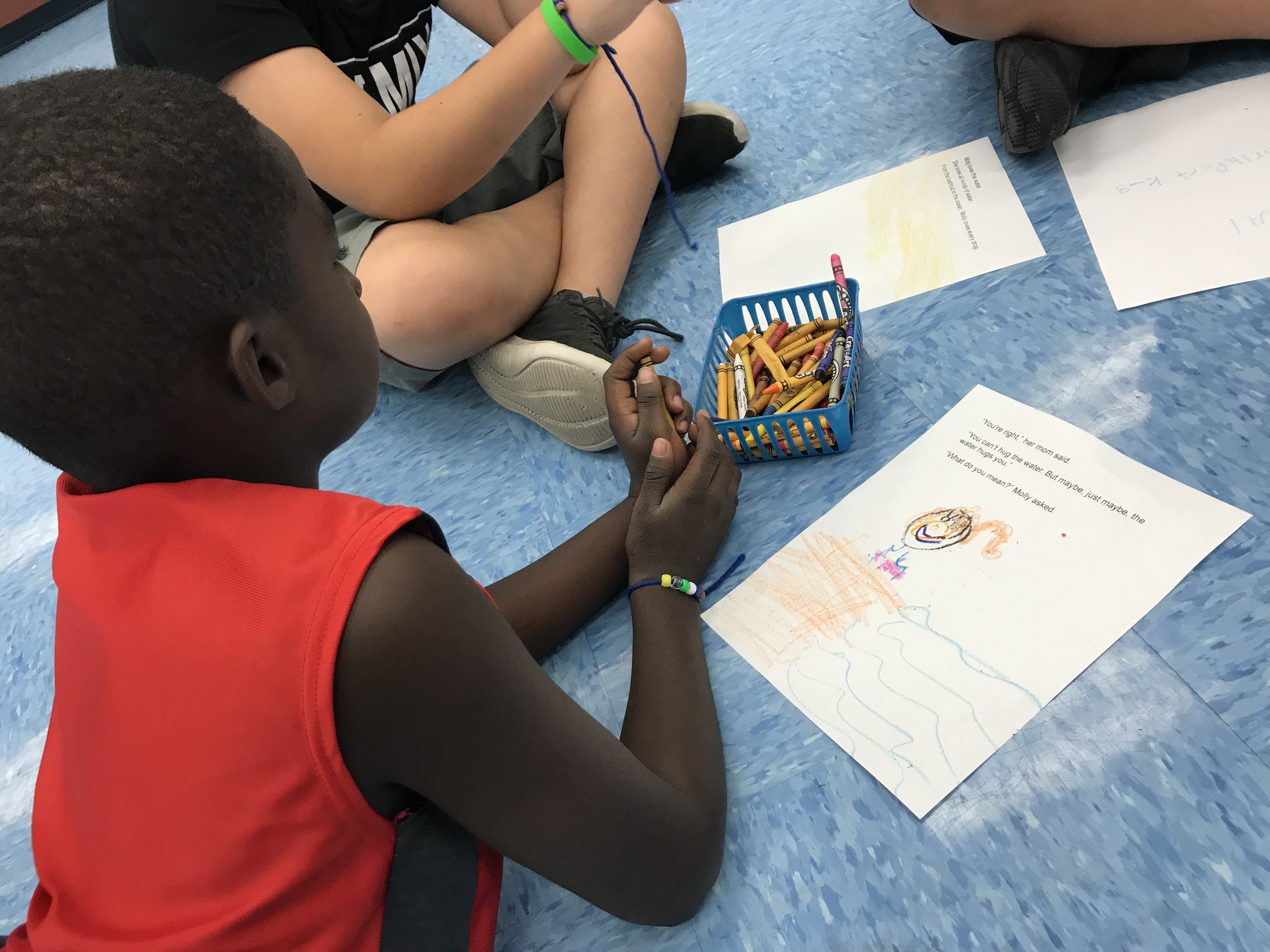
Drop Savers Water Conservation Poster Contest
Port St. Lucie Utility Systems invites St. Lucie County school students to participate in the 2024 Drop Savers Water Conservation Poster Contest in conjunction with the Florida Section American Water Works Association.
Utility Systems received 240 entries from students in Pre-K through 8th grade in 7 schools and homeschool groups. A winner was chosen from each grade based on the poster’s message, creativity, and originality. The students received a $25 Walmart gift card, a shirt with their poster printed on it, plus lots of other cool prizes. Congratulations to the winners!
2024 “Drop Savers” Poster Contest Winners:
- Kindergarten: Cole Drouin, Savanna Ridge Elementary
- 1st Grade: Hinata Springs, Ivy League Academy
- 2nd Grade: Timothy Kitchens, Ivy League Academy (2023 1st grade winner)
- 3rd Grade: Mia Macuga, Ivy League Academy
- 4th Grade: Catalina Gonzalez, Savana Ridge Elementary
- 5th Grade: Gabriella Babilonia, Savanna Ridge Elementary
- 6th Grade: Ny’Asia Dudley Dan McCarty Middle
- 7th Grade: Daniel Ruggian, Ivy League Academy
- 8th Grade: Isaiah McLeish, Homeschool
- 9th Grade: Daniela Nicado, St. Lucie West Centennial High
Honorable Mentions
- 2nd Grade: Ryland Hoffman, Savanna Ridge Elementary
- 4th Grade: Gianna Grasso, Morningside Elementary (3-time winner)
- 7th Grade: Frank Martinez, Ivy League Academy
The 2018 Drop Savers Water Conservation Poster Contest won the Treasure Coast Chapter Florida Public Relations Association (FPRA) Judges' Award for a Public Relations Program.
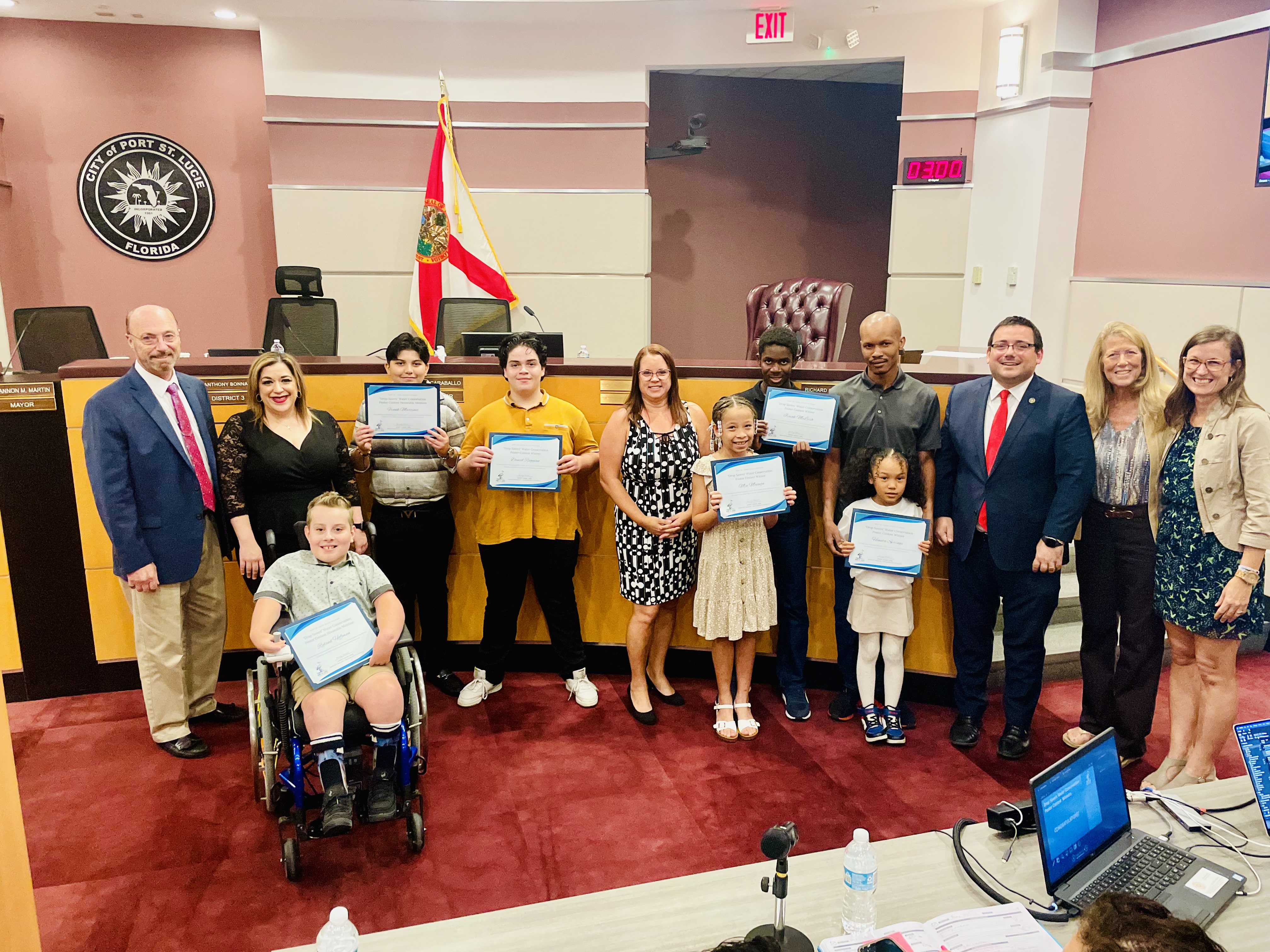
2024 Drop Savers Water Conservation Poster Contest Winners
Water and Wastewater Wonders Activity Book
SC.4.P.8.2, SC.3.P.9.1, SC.1.E.6.1, SC.1.E.6.2, SC.2.P.8.2, SC.5.E.7.2
Explore the wonderful world of water and wastewater with Mikey the microorganism, a friendly bacteria who lives at the wastewater treatment plant.
There are lots of fun activities and coloring pages to help kids learn about where our water comes from and how we clean it up before it is sent to homes. They will also learn about the wastewater treatment process, as well as how they can help maintain our systems and save water.
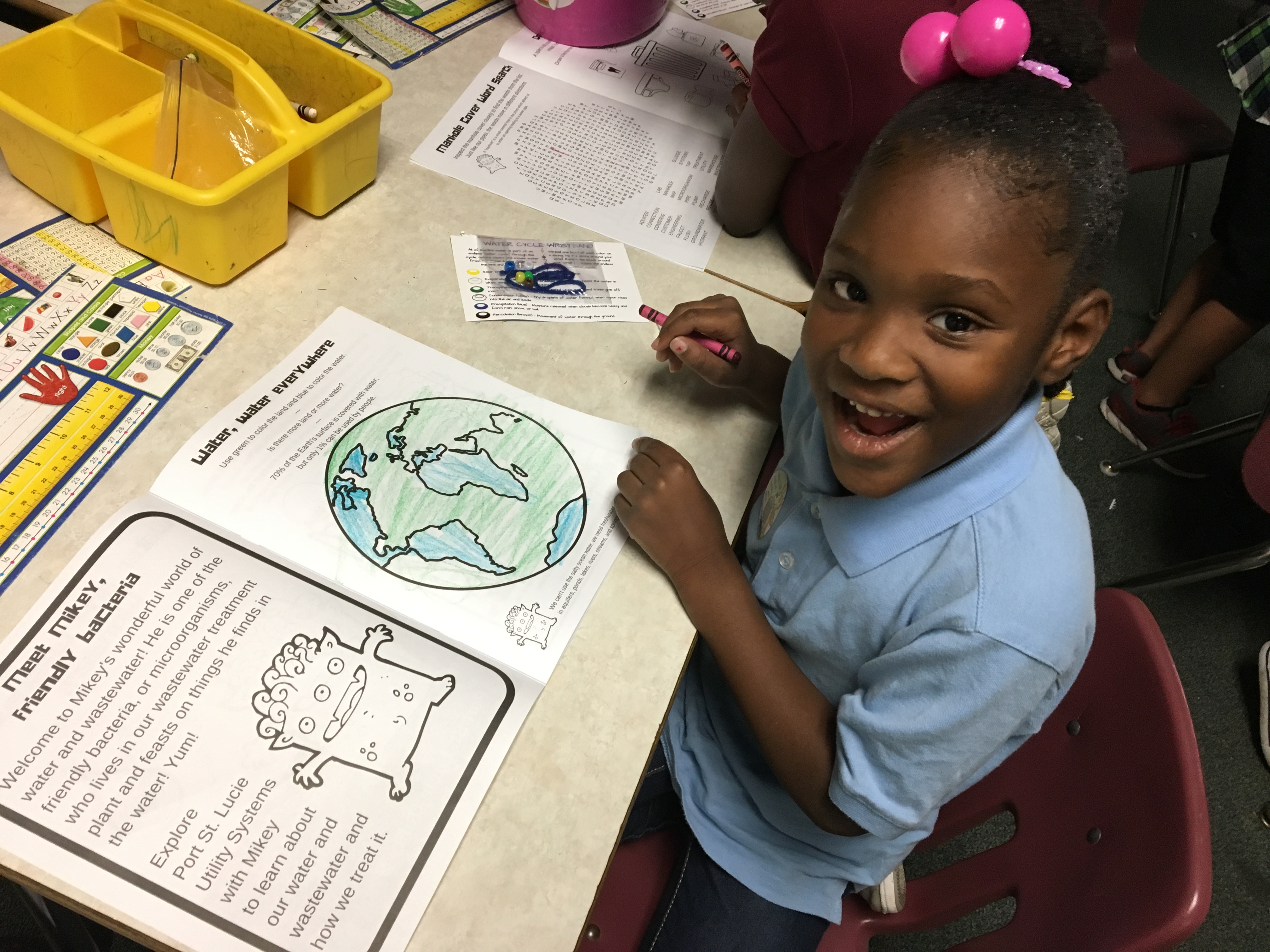
Be a Water Saver Super Hero
By making a few simple changes at home, kids can become Water Saver Super Heroes! Wasting less water, not only helps to conserve, it helps save money on the water bill. Everyone wins when they live with a water saver super hero. So "water" you doing to help? Let’s start saving!
Save in the Bathroom
Watch "Water Saver Super Hero: Kids Save in the Bathroom"
Download Water Saver Super Hero: Kids can Conserve in the Bathroom Coloring Book
Download Water Saver Bathroom Door Hanger
Save in the Kitchen
Watch "Water Saver Super Hero: Kids Save Water in the Kitchen"
Download Water Saver Super Hero: Kids can Conserve in the Kitchen Coloring Book

Water Cycle Activities
SC.4.E.6.3, SC.5.E.7.1, SC.3.P.9.1
All of the Earth's water is part of an endless "water cycle." Through this cycle, nature cleans and moves water from the ocean to the air, then to the land and back again.
A fun way to help kids visualize the water cycle include making a wristband using yarn and different colored beads that represent each step. Kids will also like creating their own water cycle in a jar using a small plant, rocks, sand, and gravel.
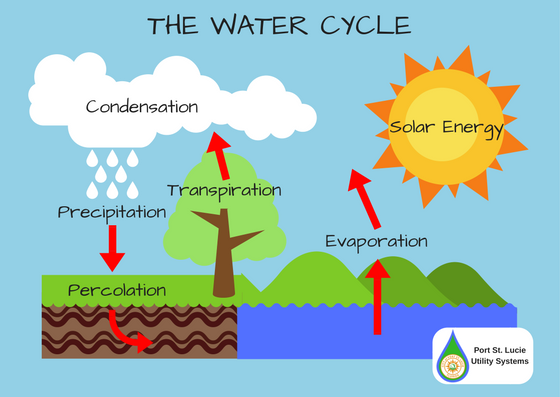
DIY Water Filtration System
A homemade water filtration system demonstrates the process in which dirty water moves through various layers that trap particles, only allowing the water to pass through.
This is a very simple and visual way to show how water percolates on Earth and is "filtered" before it reenters the aquifer.
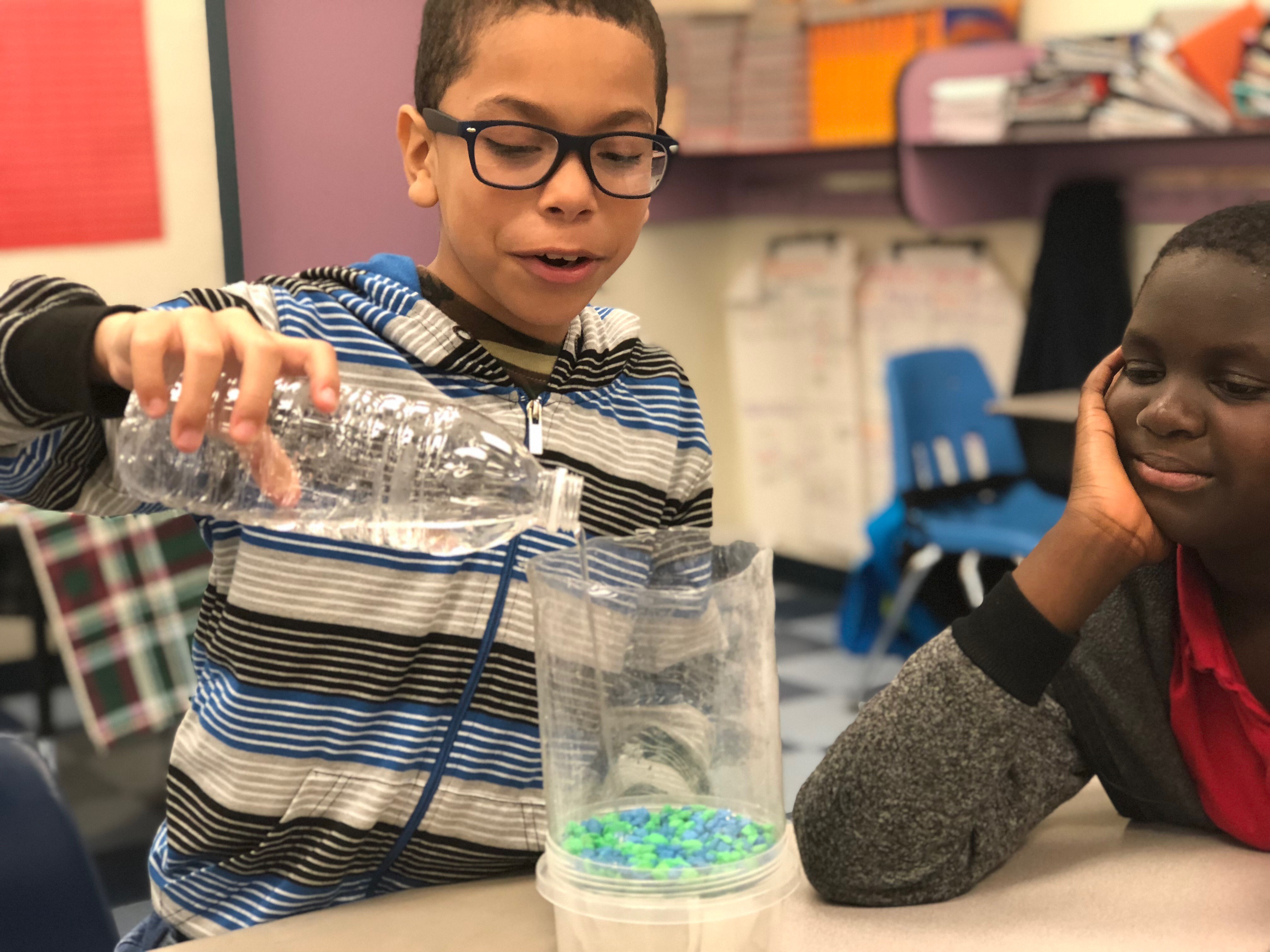
Keep Francis from FOGging up our sewers
Masses of congealed grease and other non-flushable items found in sewer systems are often referred to as “fatbergs,” which combine the words “fat” and “iceberg” to describe the look of this greasy glacier.
Meet resident troublemaker Francis FOGberg—one of those congealed masses. Francis is so much more than a fatberg though—he’s a FOGberg—fats, oil, and grease—as well other things that should not be flushed down the toilet or washed down the drain.
When FOG enters pipes, it cools and forms blockages, which prevent wastewater from flowing efficiently. It builds up over time and collects other flushed debris like wipes, medicine, and plastic products. The clogs create backups in your home and can damage infrastructure, and ultimately, wastewater cannot be properly processed and treated to make reuse.
You’ll see Francis FOGberg out and about at community events bringing awareness to the issues FOG and other non-flushable items can cause, as well as ways you can help prevent it.
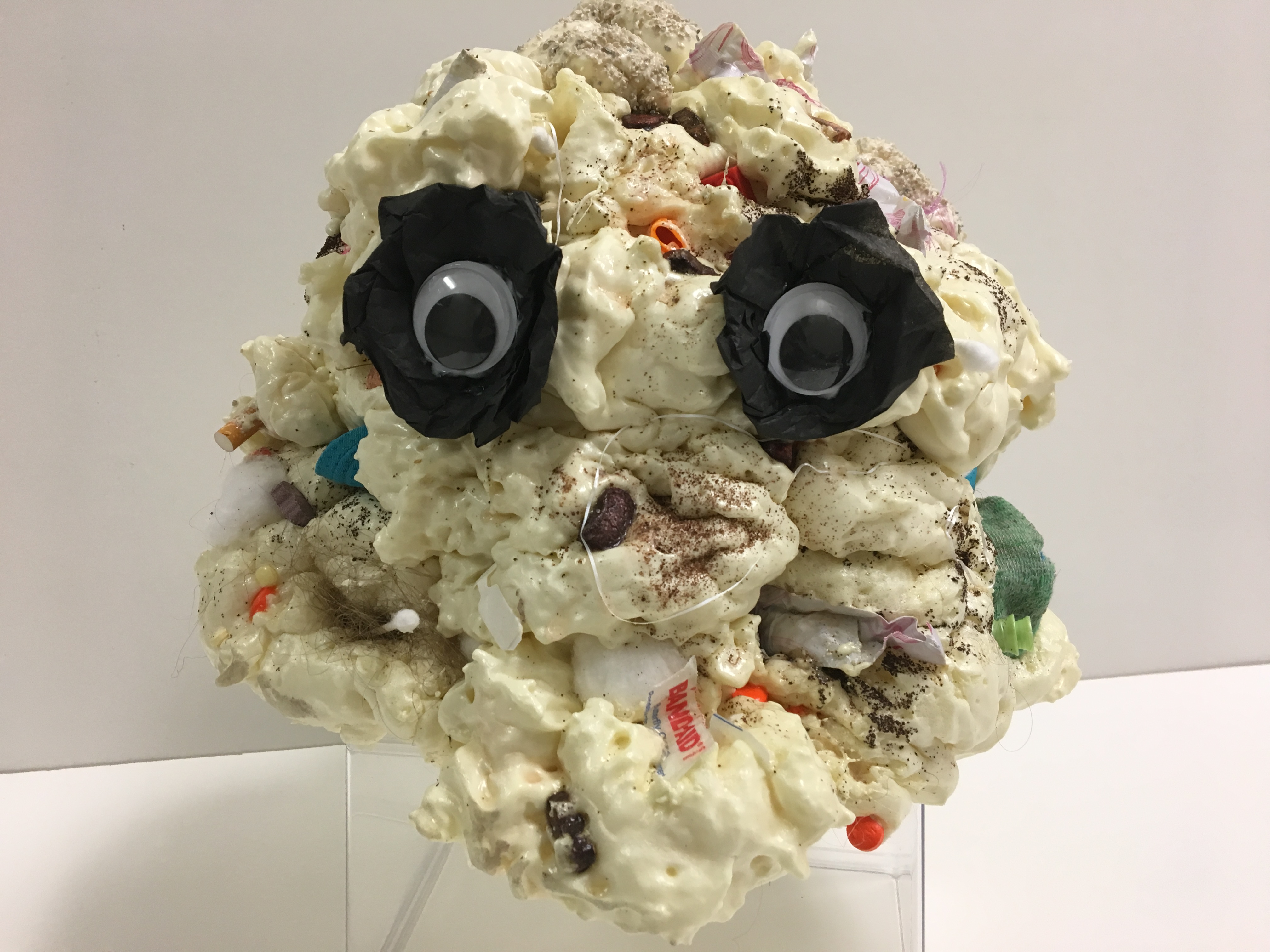
Clog Creation
A section of wastewater pipe is clogged with non-flushable items such as a washcloth, socks, and toys to demonstrate how easily a clog can occur. Only the 3 P's (pee, poo, and paper) should be flushed down the toilet, everything else should be thrown away in the garbage can.
Water and Wastewater Treatment Plant Tours
SC.5.P.8.2, SC.1.E.5.3, SC.1.E.6.1, SC.2.E.6.1, SC.1.E.6.2, SC.2.P.8.2, SC.3.N.1.6, SC.4.E.6.3, SC.5.E.7.2
Tours of the water and wastewater facilities allow kids to see the treatment processes and equipment first-hand while learning how the systems work from the men and women who operate them.
Watch this video to learn more about our water treatment process
Watch this video to learn more about our wastewater treatment process
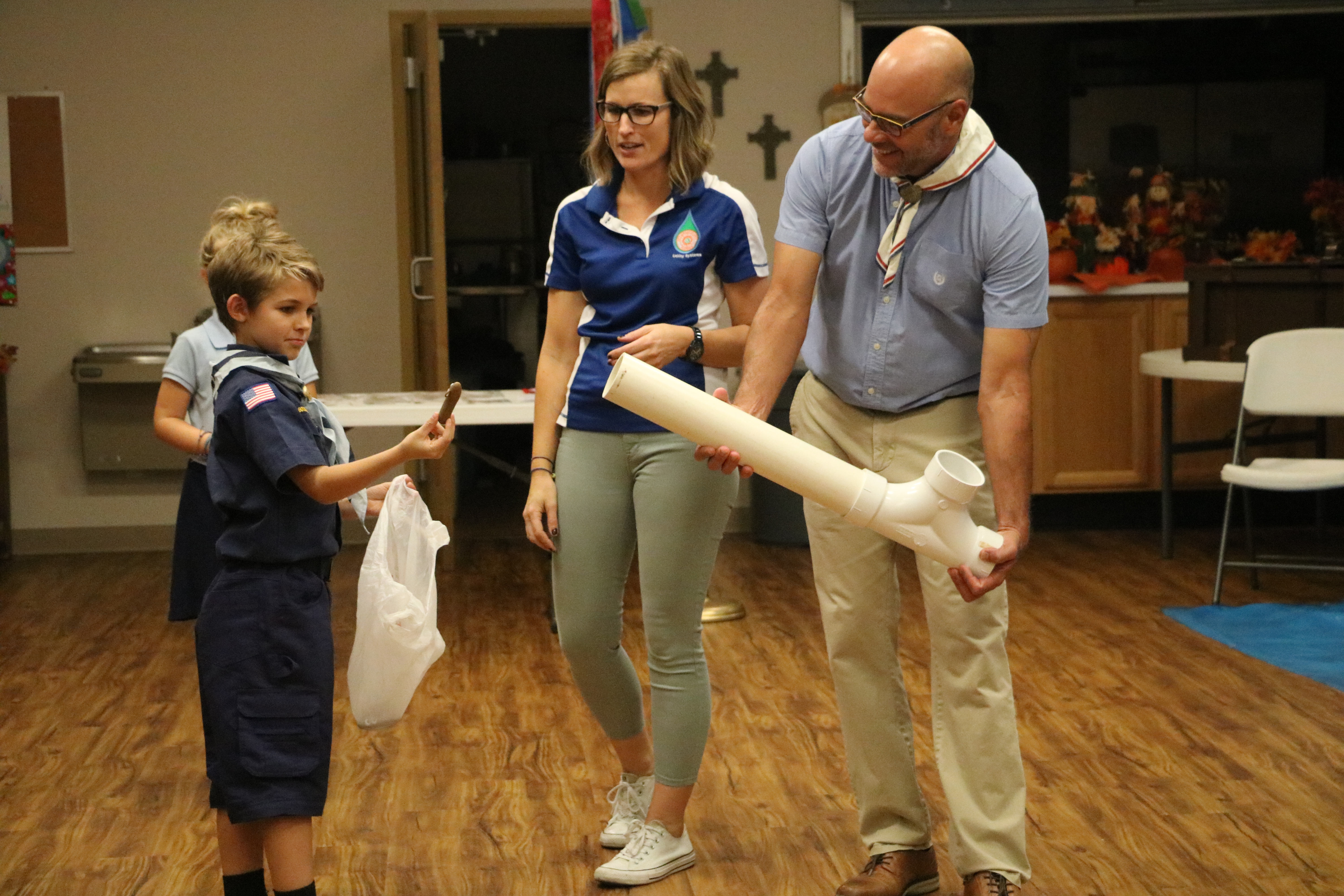
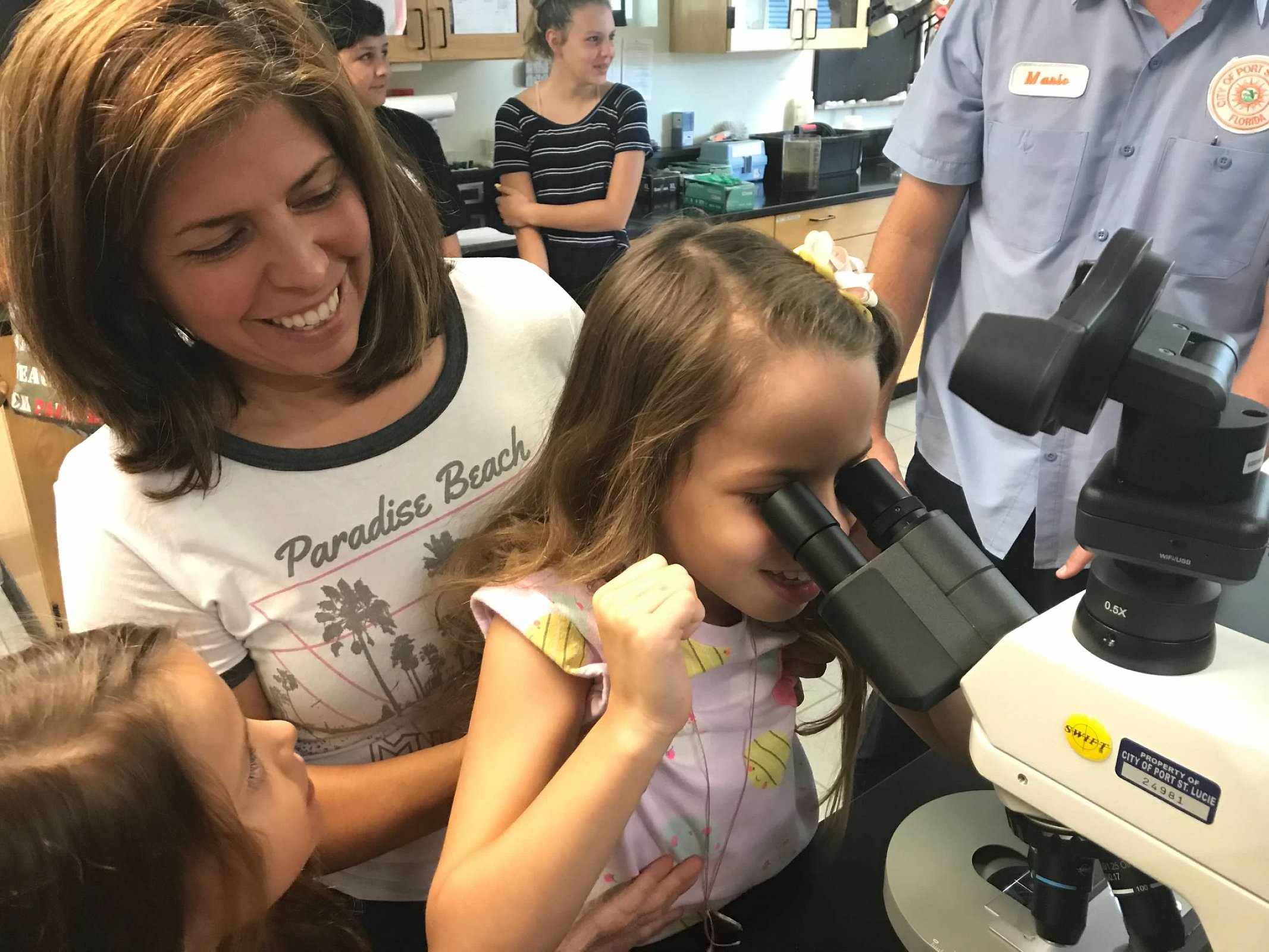
Flush Test: Toilet Paper vs. Wipes
SC.5.P.8.2, SC.K.N.1.1, SC.3.N.1.6,
Cups filled with water serve as toilets when comparing what happens to both toilet paper and wipes once flushed. Using a spoon to stir, the toilet paper quickly breaks down while the wipe stays completely intact.
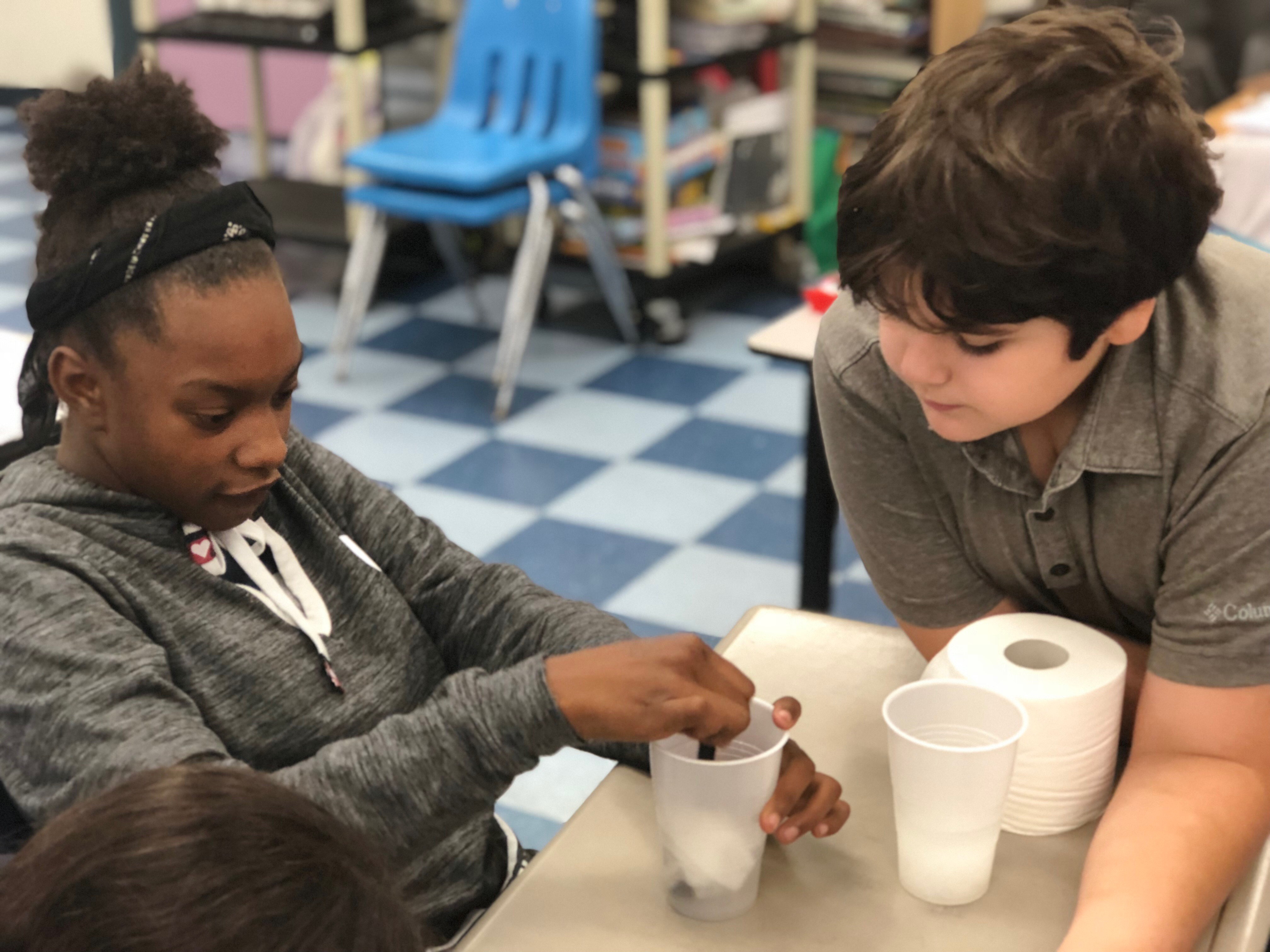
Mollycule Maker
Water Woman's sidekick and real-life daughter Molly, aka Mollycule, was the inspiration for this activity that helps kids understand the molecular structure of water. Water is special because it can be found in three different states: liquid, solid, and vapor. A water molecule, or H20, is made up of two hydrogen atoms and one oxygen atom bonded together. Temperature determines which state it is in. When water freezes the molecules slow down and get close together. As ice melts the molecules move away from each other. When water heats up the molecules bounce off one another and rise into the air. Kids can make their own water molecule model using a foam sheet and three plastic caps, two identical caps to represent the hydrogen atoms and one large cap to represent the oxygen atom. Since implementing this activity, 2,574 plastic caps have been repurposed and kept out of the trash.
Calculate your water footprint
Use this worksheet to calculate your water footprint to see how many gallons of water you use on an average day. You will see how quickly it adds up in the bathroom, the kitchen, and the laundry room. Move through each room on the worksheet and list how many gallons you are using on a typically day. Write your answers next to each number, then add them up. The average person uses 80 to 100 gallons per day, so if your number is within that range, you are not wasting water! For those with high usage, there are easy ways to save water throughout your day, like taking shorter showers and turning the faucet off when you brush your teeth.
Download Water Footprint Worksheet
Make your own microorganism
Microorganisms like tardigrades and rotifers help break down wastewater at our treatment plants by consuming the waste in the water. Some are free swimmers and some latch onto particles to move around. Some have legs and some have tails. And although their physical appearances look totally different under a microscope, they all have the same job to do—eat! Kids can use their imagination to make their own 3-D versions out of clay or draw them on a piece of paper. The only requirement is that their microorganism has a mouth. It is fun to compare each one to see how different they all are.
